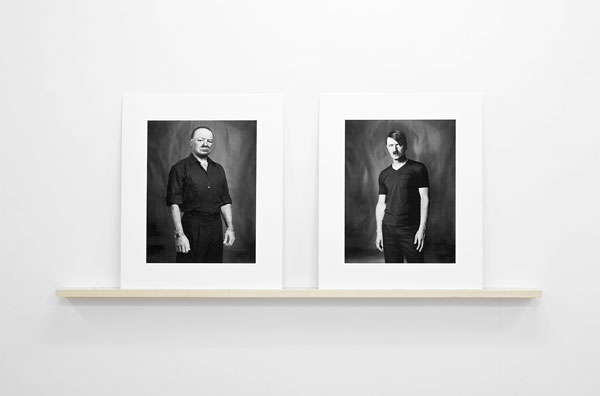Churchill and Hitler
Churchill and Hitler
Archival inktjet, wood
80 x 175 x 10 cm
3ED/2AP

The pictorial and linguistic techniques, the norms and procedures belonging to the milieu of graphic design, thus form a habitat in which his work can unfold. In contrast to his colleagues, Daniel allows new images to emerge by shifting their context or linguistic definition. Their new context is a new form of observation, of perception.
We have seen man produce fire using stones, build pyramids with manpower and run crusades with conviction. Documentaries – for the general public – are more and more often furnished with actors and décors belonging to the context they are illuminating. Whenever that context approaches and overlaps the period of the film medium, it forces a critical attitude. Through the implementation of computers a (virtual) reality is created which has never been, or never as such. With the likes of YouTube, Facebook, MySpace, and other networks, these sorts of new images are quickly going to lead a life of their own.
The portraits of Churchill and Hitler came into existence with the launch of Discovery Channel’s (UK) programme ‘Virtual History’. Daniel considered these images a publicity stunt and put his finger in the wound in relation to digital image manipulation. These portraits point to a possible confusion in the perception of history. Hitler and Churchill are only represented as full-fledged mannequins years after their deaths. Although confronted at first sight both portraits are clear in their depiction. This new appearance of two historic, influential individuals, and their perfected execution creates, however, a new ethical approach regarding an advance in the use of digital media.
Kurt Geraerts
Elisa Platteau Galerie


